-
Posts
2.058 -
Joined
-
Last visited
-
Days Won
51
Posts posted by Genava55
-
-
I want the Thalamegos!!!
Joke aside, if it can help you :
THE LOST PALACE: Hellenistic Palace of Alexandria
reconstruction of the palace area in Alexandria
https://www.academia.edu/4662183/reconstruction_of_the_palace_area_in_Alexandria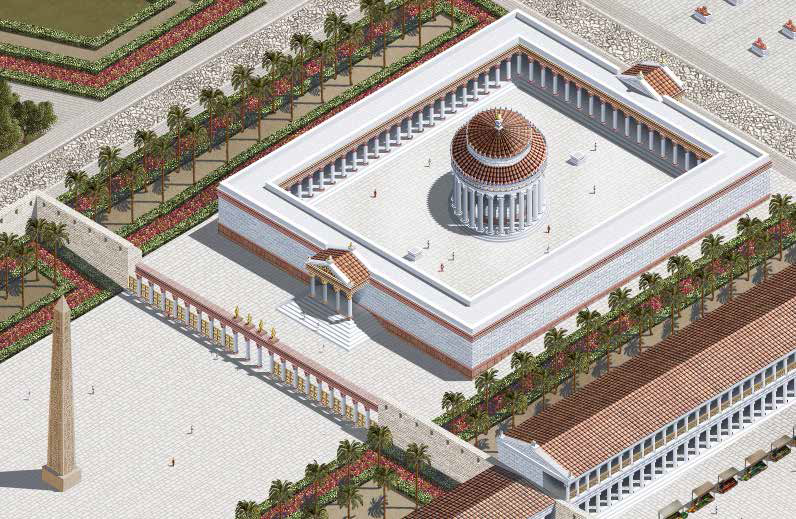

-
 2
2
-
 1
1
-
-
On 1/23/2019 at 2:49 AM, borg- said:
I think all civilizations should have these 4 units as a base, infantry melee spearman/sword, infantry ranged archer/javelins (I do not know how much of this is historically correct). It would be great for us to balance.
For me it is absolutely not a problem. Spearman, swordsman, cavalry, skirmisher, slinger... these are very common in any "barbarian" culture. But if they have all the same roster and that currently the same stats for each type, it could become boring. I don't know if you are talking about the vanilla game or about a mod.
Is it more balanced like this? Different starting units but with the town phase they are more similar with their new units.
Gallic roster:
-
Village
- Swordman - Cingetos (generic term for warrior fighting in the front line).
- Javelin skirmisher - Bagauda (bellicose/fighter), Talanos (support person). or Adretos (who moves fast, attacker).
- Sword cavalry - Eporedos (cavalryman).
-
Town
- Champion naked warrior (spearman) - Bariogaisatos (furious spearman). Fast and scary for fresh recruit (bonus against basic version of units ?)
- Spearman - Ambactos (who-is-around, attested word from Caesar for Gallic retinue and clients).
- Slinger - Telmiuicos (slinger), Uassos (meaning servant/vassal) or Talanos (supportive person).
-
City
- Champion sword horseman - Comaterecos (patrician) or Uerouicos (victorious warrior, great fighter)
- Archer - Selgos (hunter) - Archers. Upgrade for the slinger?
- Champion Lance cavalry - Epouanos (horse-killer). Anti-cavalry special unit.
Brythonic roster:
-
Village
- Spearman - Catucos (combatant), Batacos (combatant) or Batoros (who-hit-hard, fighter).
- Javelin skirmisher - Bagauda (bellicose/fighter), Talanos (support person). or Adretos (who moves fast, attacker).
- Light cavalry with javelins - Gaisaredos (Javelin on horse, mounted), Gaisatoredos (Javelinist on horse), Adretos (who moves fast, attacker) or Bagauda (attested for horsemen as well during the Gallo-Roman rebellion).
-
Town
- Slinger - Telmiuicos (slinger), Uassos (meaning servant, attested word) or Talanos (support person).
- Lance cavalry - Marcacos (cavalryman). Marcos is another word for the horse, more common in the island than in the continent.
- Swordman - Batoros (who-hit-hard, fighter) or Excingos (attacker, who-get-out-to-fight). The Caledonians are described as using longswords and small shield and the Picts are described fighting naked.
- War-Dogs - Agrocuna (battle/bloody/killer dog)
-
City
- Champion chariot warrior - Esseda (war chariot). The Britons use war chariots with a driver and an elite warrior, they throw javelins from it and continue the fight on foot (possibility for the unit to transport one infantryman ?)
- Champion swordsman - Argos (battle champion, noble), Donnouicos (noble warrior, noble fighter) or Adscoros (attendant, retainer).
- Champion skirmisher infantryman - Caur (old-Irish for champion) or Art (old-Irish for champion and bear). A propose an Irish elite javelinist, with a historical irish shortsword. If the double weapons switch is implanted, it could be an interesting unit. Polyvalent.
-
 2
2
-
Village
-
3 minutes ago, stanislas69 said:
So the current barrel is still historically accurate ?

For me it is ok. The technic to circle the barrel with iron is already known at this time, since it is used to do the same for chariot wheels.
4 minutes ago, stanislas69 said:Yeah, the idea would be to add nice props to make the building interesting. A sketch would really help though. a little paintover in mspaint for instance.
Ok! I will try to do some sketches.
-
2 minutes ago, stanislas69 said:
I'll see what I can come up with though my option are kinda limited when it comes to textures.
Yes I understand. It is not necessary urgent, maybe Wacky and Alexander can help for these things in the future.
6 minutes ago, stanislas69 said:Should all the barrels have three rows ? like this
Good question. By checking on the literature, I think there is a huge diversity of typology during the Gallo-Roman period:
https://www.persee.fr/doc/galia_0016-4119_2001_num_58_1_3179
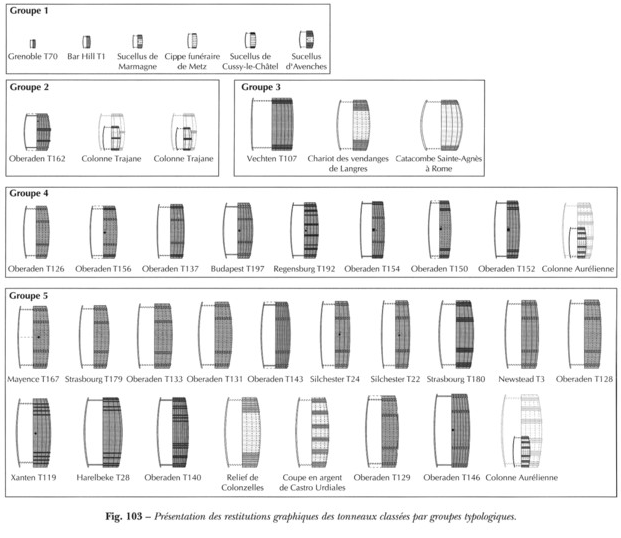
-
15 minutes ago, stanislas69 said:
Sure, under the stairs was to fill the void before I added the wicker.
Fair enough.
15 minutes ago, stanislas69 said:Wouldn't adding pottery and baskets make it even more messy ?
It depends if there is a meaning behind their addition. For example if there are small places with a few buckets in reserve, drinking services, a few potteries for food, two or three barrels, it could make sense as a preparation for the distribution of these during an assembly. Maybe on the sides of the front scene if I can suggest you.
-
13 minutes ago, Nescio said:
Could you replace the barrels with pottery or baskets? Stave-and-hoop barrels are well attested for the European Middle Ages, but I'm not sure they already existed in Antiquity.
From the Gallo-Roman period (2nd century AD I think)
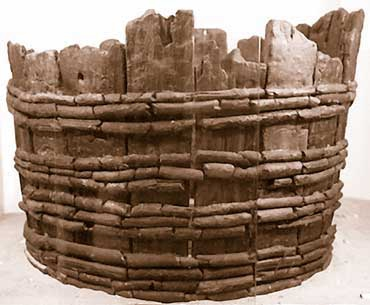
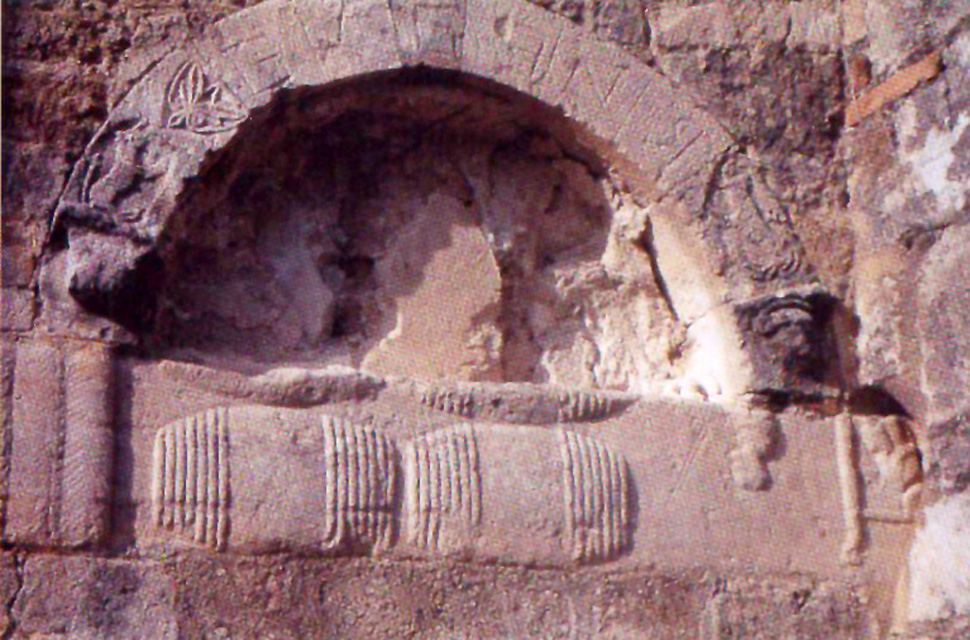
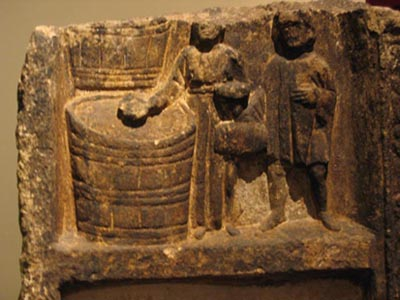
But I agree for the potteries. There also decorated bucket from the Late La Tène period.
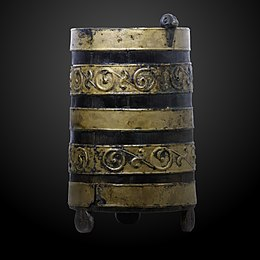
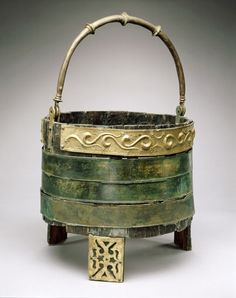
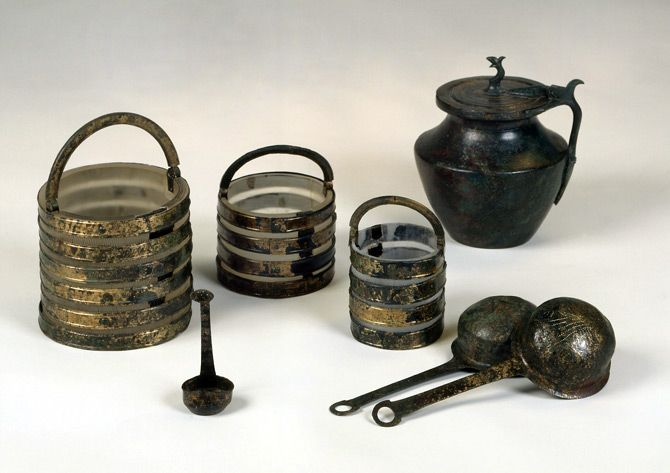
Roman amphora are as well attested on the Corent hemicycle, it is suspected they drank wine and ritually "killed" the amphora to seal the deal. I don't have any problem with the idea of stuff like barrels, potteries and buckets. Maybe just avoid the cliché of putting it everywhere like a messy place (under the rows/tiers for example, it has no sense).
-
 1
1
-
-
50 minutes ago, stanislas69 said:
From a gameplay pov what would be there use ? Aura boosters ?

Aura booster for the player units or even aura malus for enemies. The Carnyx were described as scarying the Mediterranean troops when they are not used to hear it. Maybe the soundtrack used by EB2 could be used, they have carnyx playing as battle soundtrack. Maybe it is in the CC license. I need to check.
Edit: it is actually a soundtrack from John Kenny. I don't know if they got his permission.
Edit2: http://www.twcenter.net/forums/showthread.php?702760-Celtic-Campaign-Theme-(music)
50 minutes ago, stanislas69 said:The building could also boost trade income or have some specific technologies
Mmm, yeah why not. Maybe a boost related to the number of civic centers owned by the players. The historical justification is an increase of pagus and civitas (territories) under the authority of the assembly as vassals and clients. An increase of tribute as a consequence.
-
8 hours ago, wowgetoffyourcellphone said:
Hmm, seems kind of, dunno, not very creative to just make it another barracks.
Fair point. This assembly can have different purposes but most of the idea are already used in the game: heroes recruitment, territory extension, increasing capture resistance nearby and military upgrades research for examples. In my mind, it could have been the place to recruit clientship units of the late La Tène period (archers, ambactos etc.) or to research their upgrades enabling them. But as an innovative idea, I see the possibility to produce some standard-bearers or some carnyx players.
-
 1
1
-
-
1 hour ago, stanislas69 said:
Backside is a bit empty could add wicker (like on the left),
It is not that bad. Wicker is an interesting idea I think. It is very easy to embellish a wicker construction, with pattern, different woods or painting.
SpoilerSimple color patterns examples on some pottery:
47 minutes ago, stanislas69 said:Are shields correct ?
The shape yes. The shield boss should be in iron to be more accurate. I wonder if the shield hanging around is not making the environment messy.
47 minutes ago, stanislas69 said:Yeah why not. More props sound nice.
- The boar-standard is definitely proven:
- Spear-standard, horse-standard and bull-standard are also seriously suspected.
11 minutes ago, wowgetoffyourcellphone said:What's this gonna be?
A building I suggest to call Remogantion, the assembly of the princes. Representing the assembly of the Gallic "senators" mentioned by Caesar. It could be the building for the recruitment of the champion cav unit and maybe some others late units.-
 1
1
-
3 minutes ago, stanislas69 said:
Not sure I get your meaning.
En gros, est-ce que tu voudrais rajouter des objets pour embellir le bâtiment ou remplir la scène?
For example, the Roman account the importance of military standard to make an oath. Maybe we can display some military standards known for the Gauls, maybe a few carnyx as well.
QuoteCaesar, 7, 2: While these things are in agitation, the Carnutes declare "that they would decline no danger for the sake of the general safety, and promise" that they would be the first of all to begin the war; and since they can not at present take precautions, by giving and receiving hostages, that the affair shall not be divulged, they require that a solemn assurance be given them by oath and plighted honor, their military standards being brought together (in which manner their most sacred obligations are made binding), that they should not be deserted by the rest of the Gauls on commencing the war.
It is just an idea I throw around.
-
It seems nice like this. How is the back side? Not looking too much empty? I know they put something to cover the stairs in the 3D model but I don't think it will fit with your general design.
And what is your own opinion? Do want something to enhance the ambient (artistic pattern, pottery, or any other goods)?-
 1
1
-
-
19 hours ago, Nescio said:
Thank you! Could you check D1757 ?
Seems correct to me, only the name missing for binaries/data/mods/public/simulation/templates/template_structure_special_rotarymill.xml
-
13 hours ago, Genava55 said:
Illustration of how I see these possibilities.
The Gallic roster V1:
-
Village
- Spearman - Cingetos (generic term for warrior fighting in the front line).
- Javelin skirmisher - Bagauda (bellicose/fighter), Talanos (support person). or Adretos (who moves fast, attacker).
- Slinger - Telmiuicos (slinger), Uassos (meaning servant/vassal) or Talanos (supportive person).
-
Town
- Sword cavalry - Eporedos (cavalryman).
- Naked warrior (spearman) - Bariogaisatos (furious spearman). Fast and scary for fresh recruit (bonus against basic version of units ?)
- Anti-cavalry special unit - Epouanos (horse-killer).
-
City
- Champion swordman - Soldurios/Soliduros (bodyguard), Adscoros (attendant, retainer).
- Champion lance horseman - Comaterecos (patrician) or Uerouicos (victorious warrior, great fighter).
- Archer - Selgos (hunter) - Archers
The Gallic roster V2:
-
Village
- Swordman - Cingetos (generic term for warrior fighting in the front line).
- Javelin skirmisher - Bagauda (bellicose/fighter), Talanos (support person). or Adretos (who moves fast, attacker).
-
Town
- Slinger - Telmiuicos (slinger), Uassos (meaning servant/vassal) or Talanos (supportive person).
- Sword cavalry - Eporedos (cavalryman).
- Naked warrior (spearman) - Bariogaisatos (furious spearman). Fast and scary for fresh recruit (bonus against basic version of units ?)
-
City
- Champion lance horseman - Comaterecos (patrician) or Uerouicos (victorious warrior, great fighter).
- Archer - Selgos (hunter) - Archers
- Anti-cavalry special unit - Epouanos (horse-killer).
- Spearman - Ambactos (who-is-around, attested word from Caesar for Gallic retinue and clients).
The Brittonic roster:
-
Village
- Spearman - Catucos (combatant), Batacos (combatant) or Batoros (who-hit-hard, fighter).
- Javelin skirmisher - Bagauda (bellicose/fighter), Talanos (support person). or Adretos (who moves fast, attacker).
- Light cavalry with javelins - Gaisaredos (Javelin on horse, mounted), Gaisatoredos (Javelinist on horse), Adretos (who moves fast, attacker) or Bagauda (attested for horsemen as well during the Gallo-Roman rebellion).
-
Town
- Slinger - Telmiuicos (slinger), Uassos (meaning servant, attested word) or Talanos (support person).
- Lance cavalry - Marcacos (cavalryman). Marcos is another word for the horse, more common in the island than in the continent.
- Naked warrior (swordman) - Batoros (who-hit-hard, fighter) or Excingos (attacker, who-get-out-to-fight). The Caledonians are described as using longswords and small shield and the Picts are described fighting naked.
- War-Dogs - Agrocuna (battle/bloody/killer dog)
-
City
- Champion chariot warrior - Esseda (war chariot). The Britons use war chariots with a driver and an elite warrior, they throw javelins from it and continue the fight on foot (possibility for the unit to transport one infantryman ?)
- Champion infantryman (sword or spear) - Argos (battle champion, noble), Donnouicos (noble warrior, noble fighter) or Adscoros (attendant, retainer).
- Champion skirmisher infantryman - Caur (old-Irish for champion) or Art (old-Irish for champion and bear). A propose an Irish elite javelinist, with a historical irish shortsword. If the double weapons switch is implanted, it could be an interesting unit. Polyvalent.
Thus the second version for the Gallic roster, with a basic swordsman infantry have the preference?
-
Village
-
7 hours ago, borg- said:
The biggest problem I have as a player and in the balancing mod is that gauls and brit do not have swordsmen/archer citizens.
The Gallic roster could be like this:
- Heavy infantryman (spearman or swordman) - Cingetos (generic term for warrior fighting in the front line).
- Javelin skirmisher - Bagauda (bellicose/fighter), Talanos (support person). or Adretos (who moves fast, attacker).
- Slinger - Clucagretos (proto-indo-european reconstruction for slinger), Uassos (meaning servant, attested word) or Talanos (support person).
- Sword cavalry - Eporedos (cavalryman).
- Archer - Selgos (hunter) - Archers appeared only during the 1st Century BC, I suggest an unit available only in the 3rd phase but not an elite unit.
- Naked warrior (spearman) - Bariogaisatos (furious spearman). Fast and scary for fresh recruit (bonus against basic version of units ?)
- Elite infantryman (swordman) - Soldurios/Soliduros (bodyguard), Ambactos (servant, protector, retainer), Adscoros (attendant, retainer).
- Elite horseman (sword or lance) - Comaterecos (patrician) or Uerouicos (victorious warrior, great fighter).
- Anti-cavalry special unit - Epouanos (horse-killer). Gallic horsemen auxiliaries are described as being efficient anti-cavalry against the Parthians at Carrhae. Eastern Celts, Belgians and Germans share this feature it seems.
The Britonic roster could be like this:
- Heavy infantryman (spearman or swordman) - Catucos (combatant), Batacos (combatant) or Batoros (who-hit-hard, fighter).
- Javelin skirmisher - Bagauda (bellicose/fighter), Talanos (support person). or Adretos (who moves fast, attacker).
- Slinger - Clucagretos (proto-indo-european reconstruction for slinger), Uassos (meaning servant, attested word) or Talanos (support person).
- Lance cavalry - Marcacos (cavalryman). Marcos is another word for the horse, more common in the island than in the continent.
- Light cavalry with javelins - Gaisaredos (Javelin on horse, mounted), Gaisatoredos (Javelinist on horse), Adretos (who moves fast, attacker) or Bagauda (attested for horsemen as well during the Gallo-Roman rebellion).
- Naked warrior (swordman) - Batoros (who-hit-hard, fighter) or Excingos (attacker, who-get-out-to-fight). The Caledonians are described as using longswords and small shield and fighting naked.
- Elite chariot warrior - Esseda (war chariot). The Britons use war chariots with a driver and an elite warrior, they throw javelins from it and continue the fight on foot (possibility for the unit to transport one infantryman ?)
- Elite noble infantryman (sword or spear) - Argos (battle champion, noble) or Donnouicos (noble warrior, noble fighter).
- Elite skirmisher infantryman - Caur (old-Irish for champion) or Art (old-Irish for champion and bear). A propose an Irish elite javelinist, with a historical irish shortsword. If the double weapons switch is implanted, it could be an interesting unit. Polyvalent.
Gallic need spearman / Dont need three ranged units (only archers and jave), i would put slingers only to britons / Sword cav seems fine / Naked warrior, yes pls / Elite infantryman ok / Elite horseman (sword, if we will have a special unit probally is lancer cav);
Britonic need swordman / Two Ranged units ok (jave/slings) / Two cavs jave and lancer seems good / Naked swordman, yes pls / Elite Chariot ok / Elite infantryman (sword) / Elite jave ok.
I tried to differentiate with lancer/spearman for gallic and swordmans for britons.
I think all civilizations should have these 4 units as a base, infantry melee spearman/sword, infantry ranged archer/javelins (I do not know how much of this is historically correct). It would be great for us to balance.
Thanks for your feedback. The Gallic archer can be an upgrade of the slingers, similar to the upgrade in one of the hellenistic faction. If it is not difficult to code. Like this there is only one long ranged unit and it follows an evolution backed by the historical records.
If the Gauls have a basic foot swordsman and a basic sword cav and the Britons have a naked swordsman and a champion foot swordsman, is it ok? If not we can maybe put the caledonians as a normal swordsman units for the town phase and not as a naked special unit. Thus cheaper.
For the Gallic cav champion, sword or lance are both possible. Historically they used both.
-
On 1/23/2019 at 1:11 AM, Flavius Aetius said:
So as an actual Hun Historian let's clear up a few things
Hi! It is nice to have someone with experience on this subject. Thank you.
On 1/23/2019 at 1:11 AM, Flavius Aetius said:The Xiongnu and the Huns were the same people. The word has a Yeniseian and Old Turkic mixed origin as it relates to both the ruling dynasty of the Xiongnu (a Yeniseian people) and the Old Turkic name for the Ongi River in Mongolia. We don't know what it means other than that it was a dynastic name. Xiongnu is pronounced "Hongna" and was transmitted over the Himalayas or via sea trade to India and transliterated into Sanskrit, before coming up from India into Sogdian, and then spreading into Bactrian Greek as Ounna, where it became Ounnoi in Roman Greek (Romeika), and then Hunni in Latin.
Well, you are right on the relationship between both accounts. But the timespan and the geographical contexts are quite different, 3rd c. BC to 2nd c. AD for the Xiongnu empire and 3rd to 5th c. AD for the Huns in Europe. The Huns of Attila are not exactly the same than the Xiongnu faced by Han Wudi (Liu Che). The situation is similar for the Hepthalites Huns, there are some differences and cultural exchange. Especially in the case of multiethnic empire. I think it is why it was thought to make two factions.
On 1/23/2019 at 1:11 AM, Flavius Aetius said:Huns can be identified by the Haplogroup Q-M242.
The use of the haplogroup Q-M242 is a bit difficult in Europe because Germans are carrying a few percent of this haplogroup. As you pointed out, this haplogroup is a feature from the Palaeolithic and it has spread through the Arctic cultures as well. Thus in Scandinavia too. We find today from 2 to 4% in the Swedish and Norwegian population. But you are right, there is a signal of the Xiongnu in the genome of some burials in Tian Shian for the 3rd/4th century AD. Indicating a migration (and some mixing as well).
On 1/23/2019 at 1:11 AM, Flavius Aetius said:If you have questions I can probably answer any of them about the Huns and I know a lot about the Alans too
The Han records some battles against the Xiongnu where they used numerous infantrymen, for example the battle of Mobei. Do you have some information on the status and equipment of these men? Are they Han chineses?
Zhao Xin is noted to have built a fortress, do you have any information on this building?
-
52 minutes ago, Sundiata said:
The ships in 0AD all have different symbols in player color decorating the sails of their ships to help make them more recognizable in game. In reality, I'm pretty sure most sails were completely undecorated. I already made the eagle with SPQR, but we need some variation. That's why I've been asking people in the community to provide some accurate Roman symbols for sail decoration, because I'm not an expert. The wolf is coming up. But I'd like at least 3 different symbols.
Here some proposition
https://en.wikipedia.org/wiki/Roman_currency#/media/File:Aes_Signatum.jpg
Janus double-face from a Aes grave: https://img.ma-shops.com/goduto/pic/906_z_712_ae_grave.jpg
Open hands from an Aes grave: https://fr.wikipedia.org/wiki/Fichier:Aes_Grave_Quadrans3.jpg
-
 1
1
-
-
1 hour ago, wowgetoffyourcellphone said:
I might add that Irish unit to DE as a mercenary. Good idea.
 Cool ! You can look to the Lisnacrogher sword and to the Clonoura shield for references to help you.
1 hour ago, stanislas69 said:
Cool ! You can look to the Lisnacrogher sword and to the Clonoura shield for references to help you.
1 hour ago, stanislas69 said:Some kind of spearman I guess. I know that in the middle ages they had some special spears to target horses, so I guess it's just an evolution ^^
It could be a spear. Indeed, there are some hugh spearheads found for the La Tène Gauls, even of the size of a sword for one found in Belgium. But the Roman accounts talk about a sword as well. However, I don't think it is really important, what is their characteristics is their swift tactic unexpected by most of their enemy. Even by the Parthian Cataphracts. It should be hard to create a new animation if we want to follow the two descriptions of the Romans (dismounting and stabbing from below). Maybe keeping it simple for the moment with a lance-cavalry unit is enough.
1 hour ago, wowgetoffyourcellphone said:Any idea what the Cav Killer special unit would look like?
It is there it got interesting. We can use this unit to introduce some germanic features from the Bastarnae, the Tencteri and the Batavi. For example, in the region of the Eburones/Batavi, there is a Celtic helmet of the type Port found there and a horn possibly from another helmet, probably posterior of the Gallic Wars:
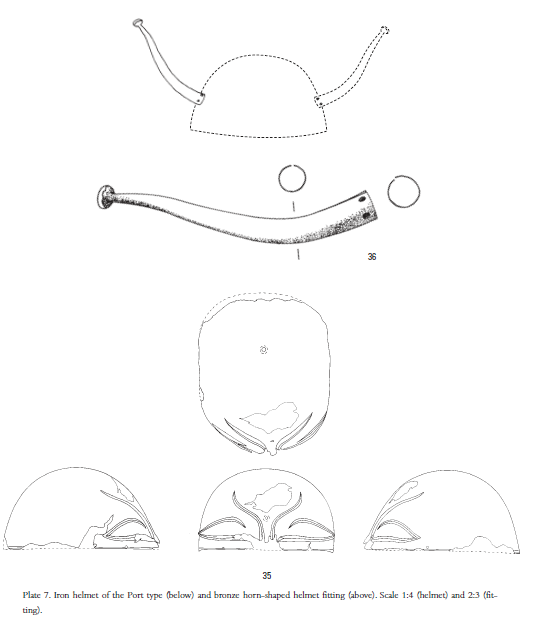
There is the Bastarnae warrior with a bear cloak and claws necklace:
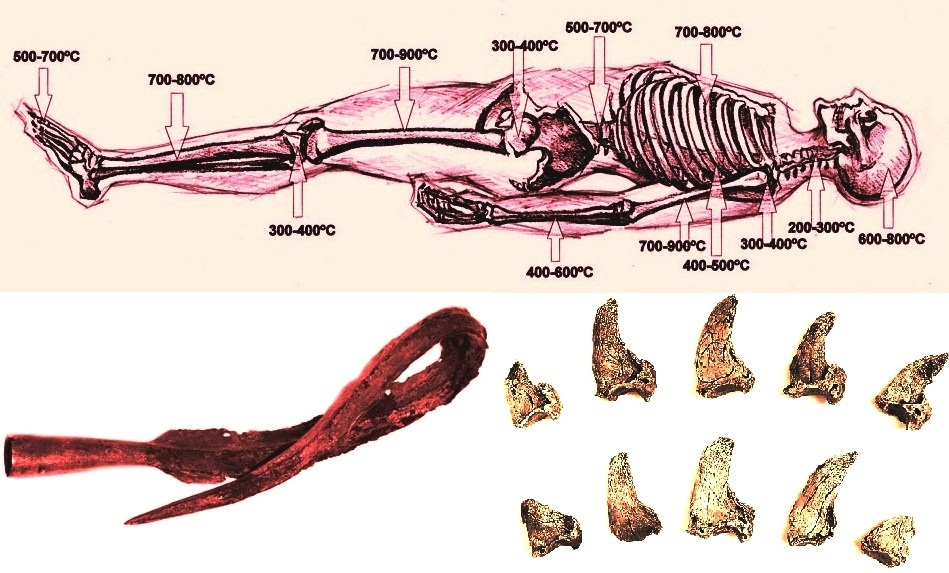
A bear cloak was found in south Britain as well, therefore it is possible that this custom was shared by a few Celts.
There is also the Gelduba/Krefeld helmet from the Batavi in the 1st century AD:
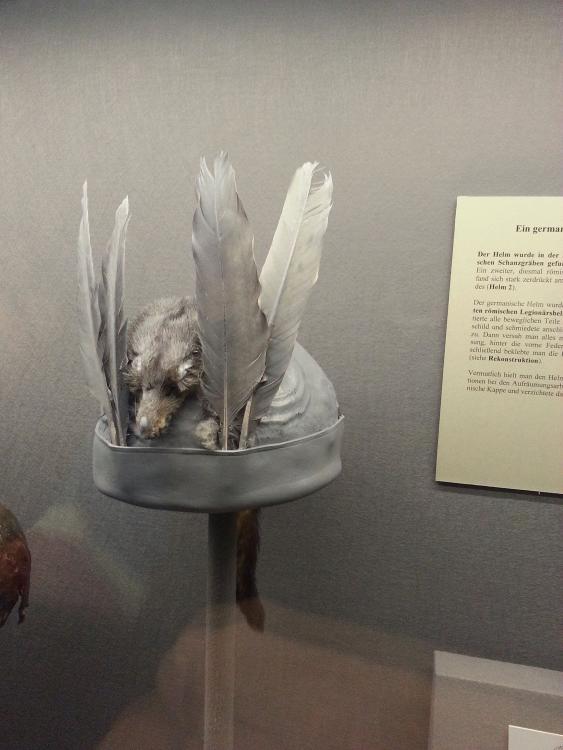
Then we can use a Gallic basis with Celtic cloth and celtic cape and adding a few germanic elements, maybe for the advanced and elite version if the unit is not a champion.
Edit: example: -
Illustration of how I see these possibilities.
The Gallic roster V1:
Spoiler-
Village
- Spearman - Cingetos (generic term for warrior fighting in the front line).
- Javelin skirmisher - Bagauda (bellicose/fighter), Talanos (support person). or Adretos (who moves fast, attacker).
- Slinger - Telmiuicos (slinger), Uassos (meaning servant/vassal) or Talanos (supportive person).
-
Town
- Sword cavalry - Eporedos (cavalryman).
- Naked warrior (spearman) - Bariogaisatos (furious spearman). Fast and scary for fresh recruit (bonus against basic version of units ?)
- Anti-cavalry special unit - Epouanos (horse-killer).
-
City
- Champion swordman - Soldurios/Soliduros (bodyguard), Adscoros (attendant, retainer).
- Champion lance horseman - Comaterecos (patrician) or Uerouicos (victorious warrior, great fighter).
- Archer - Selgos (hunter) - Archers
The Gallic roster V2:
Spoiler-
Village
- Swordman - Cingetos (generic term for warrior fighting in the front line).
- Javelin skirmisher - Bagauda (bellicose/fighter), Talanos (support person). or Adretos (who moves fast, attacker).
-
Town
- Slinger - Telmiuicos (slinger), Uassos (meaning servant/vassal) or Talanos (supportive person).
- Sword cavalry - Eporedos (cavalryman).
- Naked warrior (spearman) - Bariogaisatos (furious spearman). Fast and scary for fresh recruit (bonus against basic version of units ?)
-
City
- Champion lance horseman - Comaterecos (patrician) or Uerouicos (victorious warrior, great fighter).
- Archer - Selgos (hunter) - Archers
- Anti-cavalry special unit - Epouanos (horse-killer).
- Spearman - Ambactos (who-is-around, attested word from Caesar for Gallic retinue and clients).
The Brittonic roster:
Spoiler-
Village
- Spearman - Catucos (combatant), Batacos (combatant) or Batoros (who-hit-hard, fighter).
- Javelin skirmisher - Bagauda (bellicose/fighter), Talanos (support person). or Adretos (who moves fast, attacker).
- Light cavalry with javelins - Gaisaredos (Javelin on horse, mounted), Gaisatoredos (Javelinist on horse), Adretos (who moves fast, attacker) or Bagauda (attested for horsemen as well during the Gallo-Roman rebellion).
-
Town
- Slinger - Telmiuicos (slinger), Uassos (meaning servant, attested word) or Talanos (support person).
- Lance cavalry - Marcacos (cavalryman). Marcos is another word for the horse, more common in the island than in the continent.
- Naked warrior (swordman) - Batoros (who-hit-hard, fighter) or Excingos (attacker, who-get-out-to-fight). The Caledonians are described as using longswords and small shield and the Picts are described fighting naked.
- War-Dogs - Agrocuna (battle/bloody/killer dog)
-
City
- Champion chariot warrior - Esseda (war chariot). The Britons use war chariots with a driver and an elite warrior, they throw javelins from it and continue the fight on foot (possibility for the unit to transport one infantryman ?)
- Champion infantryman (sword or spear) - Argos (battle champion, noble), Donnouicos (noble warrior, noble fighter) or Adscoros (attendant, retainer).
- Champion skirmisher infantryman - Caur (old-Irish for champion) or Art (old-Irish for champion and bear). A propose an Irish elite javelinist, with a historical irish shortsword. If the double weapons switch is implanted, it could be an interesting unit. Polyvalent.
-
 1
1
-
Village
-
1 hour ago, Nescio said:
Out of curiosity, which of those words are attested and which ones were reconstructed? And are they all the same language (Gaulish)? Literal translations would also be nice to have, e.g.:
I edited the previous message. More precisely, the language is the continental p-Celtic mostly based on the Gaulish but with some inclusions of the Brythonic which is thought to be very close at this time (pre-Roman era).
1 hour ago, Nescio said:Furthermore, could you list your sources, for future reference?
The whole references for each word and each roots?
-
-
celt_helmet_berru: 500 to 350 BC approximately, some of them are much decorated, most not. During this period, it is expected to be a helmet of higher status, found in aristocratic burials sometimes. All of them are known exclusively in bronze.
celt_helmet_marne: Berru is in the region of Marne. It should be the same typology. Most of them were found in this region, but other were found in Europe Central, the most eastern is at Turocz in Hungary. What is called a Marne helmet is in fact a early Montefortino from Celtic tradition.celt_helmet_agris: Western France, 350 BC. Very decorated helmet. For a hero like Brennos it is a good idea.
(suggestion) celt_helmet_amfreville: Northwest France, 250 BC. Very decorated helmet. For a hero like Viridomarus it is possible
(suggestion) celt_helmet_canosa: Italy, 400-300 BC. Very decorated helmet. For a hero like Brennos it is a good idea.
celt_helmet_ciumesti_raven: Eastern Europe (Romania), second half of the 3rd century BC. For a hero like Viridomarus it is possible.
celt_helmet_montefortino: Most common helmets, general typology used by the Etruscans, the Romans, the Gauls and even some Iberians (region of Catalonia). 400 to 200 BC. The evolution of the typology is difficult and poorly done by previous researchers (too many different interpretation and naming). There are iron and bronze examples of this typology. It should be the most common helmets in the Gallic roster.
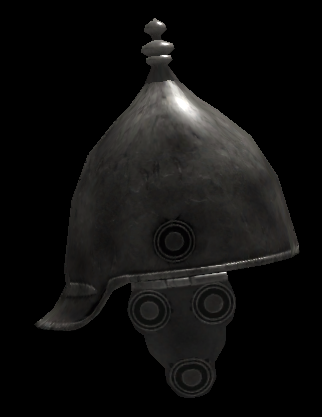
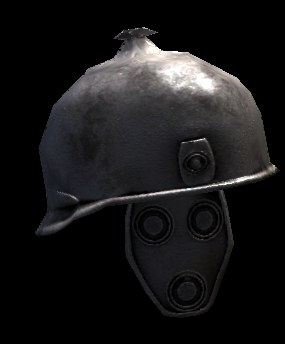
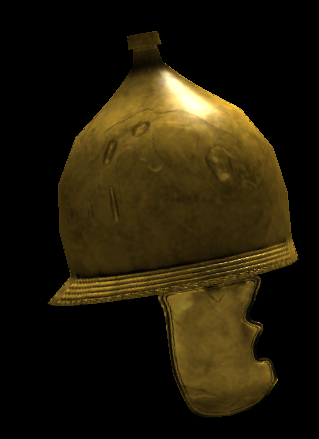
celt_helmet_ciumesti or celt_helmet_castelrotto: second half of the 3rd century BC to the end of the second century BC. Late variante of the Montefortino helmet. I think it is only an iron type. The main difference is in the cheek-protection attachment. A common helmet for the gallic roster.
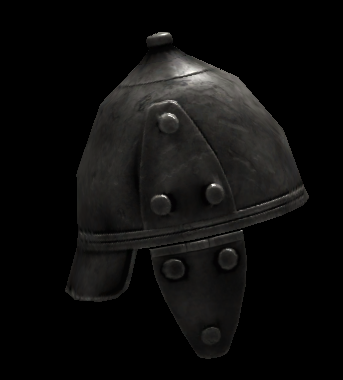
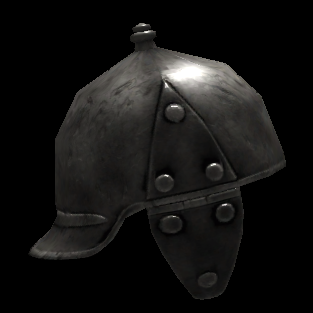
celt_helmet_port: I don't know why it is called classical coolus by Alexander. It is a helmet we found from 60 to 20 BC in France and in Switzerland with some variants in Eastern Europe. Should be a higher grade helmet. Gallic champion cavalry or infantry. Or elite version of gallic normal cavalry.
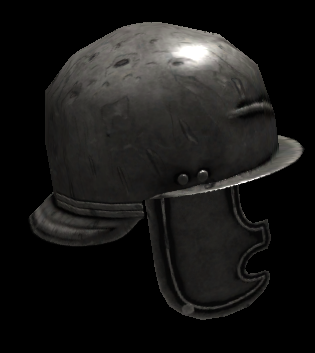
celt_helmet_alesia: 1st century BC. Most common iron helmets found during this century, in France and in Switzerland. The Agen type is a variant with a crest holder but Alexander added some features from the Forêt de Rouvray helmet (the wave border at the level of the cheek protection). For advanced units version?
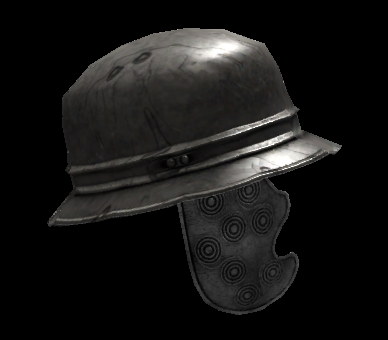
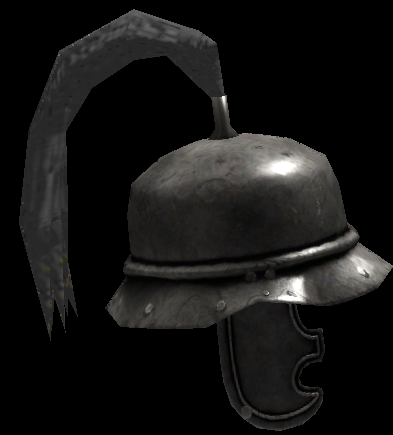
(suggestion) celt_helmet_foret: Only three helmets of this typology are known, found in Northern France, dated to the 1st century BC. Two variants, forêt de Rouvray and forêt de Louviers. Maybe an higher grade helmet but it isn't sure. Same utilisation as the Alesia and Port types is possible.
(suggestion) celt_helmet_boe: 60-30 BC helmet in iron. Found in a rich burial of a gallic cavalryman serving the army of Rome as an auxiliary, southern France. For cavalry champion.
celt_helmet_coolus_mannheim: 1st century BC, found in France, in Germany, in Switzerland and in Italy. There are two types, the coolus which is the light version and the mannheim which is the heavy version. The latter is thought to have been developed by the Romans both the Gallic auxiliaries and for the Caesarian legions during the Gallic Wars. A coolus example was found in Britain, I suggest to use it for the Britons. To my knowledge, all the Coolus and Mannheim helmets are in bronze.
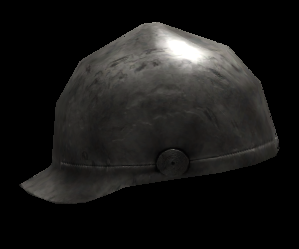
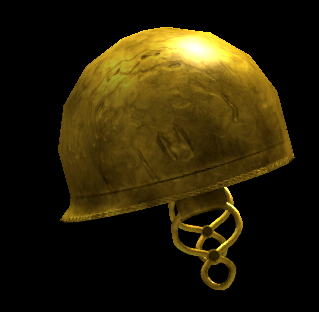
celt_helmet_meyrick helmet: Also known as the cap jockey helmet. The Meyrick helmet is dated from the 1st century AD, but I similar piece were found in the Balkans from the end of the 1st century BC in a Celtic related burial. Bronze helmets.
celt_helmet_waterloo: River Thames, Southern Britain. Mid-Late La Tene. For a Briton Hero definitely.
-
 2
2
-
 2
2
-
-
gaul_barracks.xml, Coriosedlon, "Seat of the army" (personal construction)
gaul_blacksmith.xml, Gobanion, Blacksmith
gaul_civil_centre.xml, Lissos, Palace or royal residence
gaul_corral.xml, Cagion, Corral
gaul_defense_tower.xml, Uxelon, "High-place" or "high-building" (personal construction)
gaul_dock.xml, Counos, Dock
gaul_farmstead.xml, Buta, Farmstead, barn or pigsty
gaul_field.xml, Olca, Field
gaul_fortress.xml, Dunon, Fortress
gaul_house.xml, Tegia, House
gaul_market.xml, Magos, Market
gaul_outpost.xml, Antosolicon, "which-watches-the-border" (personal construction)
**gaul_range.xml, Budinadon, "Field of the troop" (personal construction)
gaul_rotarymill.xml, Brauon, Mill
gaul_sentry_tower.xml, Uxelon, "High-place" or "high-building" (personal construction)
**gaul_stable.xml, Eposton, Stables
gaul_storehouse.xml, Capanon, Storehouse or hut
gaul_tavern.xml, -, Taverngaul_temple.xml, Nemeton, Sanctuary
gaul_wall_gate.xml, Duoricos, Gate
gaul_wall_long.xml, Rate, Wall
gaul_wall_medium.xml, Rate, Wall
gaul_wall_short.xml, Rate, Wall
gaul_wall_tower.xml, Uxelon, "High-place" or "high-building" (personal construction)
gaul_wallset_stone.xml, Rate, Wall
gaul_wonder.xml, Stonehenge, Wonder**gaul_workshop.xml, Miletucerdon, "Workshop-for-the-destruction" or "Workshop-for-the-war" (personal construction)
brit_barracks.xml, Coriosessa, "Seat of the army" (personal construction, variant with a more common root in Brythonic)
brit_blacksmith.xml, Gobanion, Blacksmith
brit_civil_centre.xml, Tigernotreba, Habitat of the ruler/lord (personal construction)
brit_corral.xml, Cagion, Corral
brit_crannog.xml, Cranogion, Island Settlement
brit_defense_tower.xml, Uxelon, "High-place" or "high-building" (personal construction)
brit_dock.xml, Counos, Dock
brit_farmstead.xml, Buta, Farmstead, barn or pigsty
brit_field.xml, Olca, Field
brit_fortress.xml, Dunon, Fortress
brit_house.xml, Tegia, House
brit_kennel.xml, Cunattegia, "hut of the dog" (personal construction)
brit_market.xml, Magos, Market
brit_outpost.xml, Antosolicon, "which-watches-the-border" (personal construction)
**brit_range.xml, Budinadon, "Field of the troop" (personal construction)
brit_rotarymill.xml, Melonas, Mill
brit_sentry_tower.xml, Uxelon, "High-place" or "high-building" (personal construction)
**brit_stable.xml, Eposton, Stables
brit_storehouse.xml, Capanon, Storehouse or hut
brit_temple.xml, Nemeton, Sanctuary
brit_wall_gate.xml, Duoricos, Gate
brit_wall_long.xml, Rate, Wall
brit_wall_medium.xml, Rate, Wall
brit_wall_short.xml, Rate, Wall
brit_wall_tower.xml, Uxelon, "High-place" or "high-building" (personal construction)
brit_wallset_stone.xml, Rate, Wall
brit_wonder.xml, Stonehenge, Wonder**brit_workshop.xml, Miletucerdon, "Workshop-for-the-destruction" or "Workshop-for-the-war" (personal construction)
Proposal:
Gaul: Feast-center, Celicnon "Feast sanctuary"
Gaul: Hemicycle, Remogantion "assembly of the princes" (personal construction)
Gaul: Monument, Mediolanon "Central place"
Briton: Comardrigantion "assembly of the comrade of the high-king" (personal construction)
Briton: Monument, Cantalon "Circular monument"
I use mostly the Delamarre’s dictionary of the Gaulish language. But honestly, I have to made up some words because they are not known or they haven't existed at all. I try to avoid the most possible to build some name from different words but I haven't the choice sometimes. I didn't translate the taverne because the whole idea of a taverne as something characteristic of the Gauls bothers me. I suggested new buildings but it is up the team to accept it or not.
-
 1
1
-
-
On 1/15/2019 at 8:09 PM, Nescio said:
That suggests the Proto-Indo-Europeans may not have had a word for a sling. (PIE doesn't have a word for chicken either; that animal didn't exist in that area back then.)
I agree. More generally, I am against any reconstruction exclusively based on PIE. I do not believe anything stay the same after several millennia, use and meaning vary a lot even at short timescale. I prefer a word already known or at least based on attested roots in use among the Celts.
On 1/15/2019 at 8:09 PM, Nescio said:But if PIE didn't have a sling, it doesn't make much sense to use PIE to reconstruct an unattested Gaulish form.
Either we use something related to the word Telmis (sling): Telmicos/Telmiuicos combatant using the sling. Inspired from the name of the Ordovices (Ordo (mace) + uicos). Either we use another word like Talanos (supportive person), Talaconios (supportive warrior) or Talassos (who-stands-in-support).
On 1/15/2019 at 8:09 PM, Nescio said:I asked because I associate France with cattle and Great Britain with sheep; the sling is primarily a goat- and shepherd's weapon; therefore I guessed slingers might be more common for Britons than Gauls. (But I know next to nothing about Celts.)
I think the weapon is used by all the Celts since the beginning. By the way, sheeps, goats and pigs are the most common species among the Gauls. In La Tène archeology, cattle and horses are indicative of a higher social status (more often in the meal of warriors and nobles).
On 1/15/2019 at 8:09 PM, Nescio said:Caesar mentioned the Gauls had a nobility class, who were skilled warriors and provided the military leaders, but also a large subject serf population, who could be called to arms in times of migration or war. Do you think it's likely the latter could have afforded swords and would have used them in combat?
I think the description from Caesar should be put into the context of the end of the La Tène civilization. Since the mid-2nd century BC, a huge boom of urbanization and of currency development was transforming the Gallic societies and it must be expected some differences between those seen by Caesar and those seen by Pytheas.
To be precise, Caesar said the ruling class is a warrior class and he used the word “equites” to describe them, generally translated as knights in English. It fits perfectly in the evolution of a sword type getting longer, suggesting a preference for fighting mounted among the warrior class. However, Caesar differentiate nobles and knights in his accounts. It seems to have a complex hierarchy at this time, with even what is described as magistrates and senators for the Roman view. Thus, it is likely a warlike aristocracy that rules the modest and poor population but not necessarily only nobles. Several Gallic leaders during the wars are described as from modest condition in comparison to others nobles.
Spoiler“He immediately seizes a great quantity of corn and provisions, cruelly tortures them, and then puts them to death, sends messengers throughout the entire state of the Aedui, and rouses them completely by the same falsehood concerning the slaughter of their knights and nobles”
“Litavicus, having received the command of the army, suddenly convened the soldiers, when he was about thirty miles distant from Gergovia, and, weeping, said, "Soldiers whither are we going? All our knights and all our nobles have perished. Eporedirix and Viridomarus, the principal men of the state, being accused of treason, have been slain by the Romans without any permission to plead their cause.”
“That with these the Aedui and their dependents had repeatedly struggled in arms - that they had been routed, and had sustained a great calamity - had lost all their nobility, all their senate, all their cavalry”
“ While these affairs were going on at Gergovia, Convictolanis, the Aeduan, to whom we have observed the magistracy was adjudged by Caesar, being bribed by the Arverni, holds a conference with certain young men, the chief of whom were Litavicus and his brothers, who were born of a most noble family.”
“When almost all the state had assembled there, and he was informed that one brother had been declared magistrate by the other, when only a few persons were privately summoned for the purpose, at a different time and place from what he ought, whereas the laws not only forbade two belonging to one family to be elected magistrates while each was alive, but even deterred them from being in the senate, he compelled Cotus to resign his office; he ordered Convictolitanis, who had been elected by the priests, according to the usage of the state, in the presence of the magistrates, to hold the supreme authority.”
“Eporedirix, the Aeduan , a young man born in the highest rank and possessing very great influence at home, and, along with Viridomarus, of equal age and influence, but of inferior birth, whom Caesar had raised from a humble position to the highest rank, on being recommended to him by Divitiacus, had come in the number of horse, being summoned by Caesar by name.”
“Dumnorix is the person, a man of the highest daring, in great favor with the people on account of his liberality, a man eager for a revolution: that for a great many years he has been in the habit of contracting for the customs and all the other taxes of the Aedui at a small cost, because when he bids, no one dares to bid against him. By these means he has both increased his own private property, and amassed great means for giving largesses; that he maintains constantly at his own expense and keeps about his own person a great number of cavalry, and that not only at home, but even among the neighboring states, he has great influence, and for the sake of strengthening this influence has given his mother in marriage among the Bituriges to a man the most noble and most influential there; that he has himself taken a wife from among the Helvetii, and has given his sister by the mother's side and his female relations in marriage into other states; that he favors and wishes well to the Helvetii on account of this connection;”
The serfdom like population is similar to slaves in right according to Caesar:
Spoiler“for the commonality is held almost in the condition of slaves, and dares to undertake nothing of itself, and is admitted to no deliberation. The greater part, when they are pressed either by debt, or the large amount of their tributes, or the oppression of the more powerful, give themselves up in vassalage to the nobles, who possess over them the same rights without exception as masters over their slaves.”
The levy seems to include sometimes slaves:
Spoiler“After this defeat, when it was ascertained that Drapes, a Senonian (who in the beginning of the revolt of Gaul had collected from all quarters men of desperate fortunes, invited the slaves to liberty, called in the exiles of the whole kingdom, given an asylum to robbers, and intercepted the Roman baggage and provisions), was marching to the province with five thousand men, being all he could collect after the defeat, and that Luterius a Cadurcian who, as it has been observed in a former commentary, had designed to make an attack on the Province in the first revolt of Gaul, had formed a junction with him, Caius Caninius went in pursuit of them with two legions, lest great disgrace might be incurred from the fears or injuries done to the Province by the depredations of a band of desperate men.”
“There was within our camp a certain Nervian, by name Vertico, born in a distinguished position, who in the beginning of the blockade had deserted to Cicero, and had exhibited his fidelity to him. He persuades his slave, by the hope of freedom, and by great rewards, to convey a letter to Caesar. This he carries out bound about his javelin; and mixing among the Gauls without any suspicion by being a Gaul, he reaches Caesar. From him they received information of the imminent danger of Cicero and the legion.”
Caesar distinguish freemen bonds by clientship and serfs/slaves:
Spoiler”Orgetorix drew together from all quarters to the court, all his vassals to the number of ten thousand persons; and led together to the same place all his dependents and bondsmen”
“His brother Valetiacus had borne the same office during the last year: that the whole state was up in arms; the senate divided, the people divided; that each of them had his own clients; and that, if the animosity would be fomented any longer, the result would be that one part of the state would come to a collision with the other”
Vercingetorix planned a clear logistical project to arm the levy:
Spoiler“There in like manner, Vercingetorix the son of Celtillus the Arvernian, a young man of the highest power (whose father had held the supremacy of entire Gaul, and had been put to death by his fellow-citizens, for this reason, because he aimed at sovereign power), summoned together his dependents, and easily excited them. On his design being made known, they rush to arms: he is expelled from the town of Gergovia, by his uncle Gobanitio and the rest of the nobles, who were of opinion, that such an enterprise ought not to be hazarded: he did not however desist, but held in the country a levy of the needy and desperate. Having collected such a body of troops, he brings over to his sentiments such of his fellow-citizens as he has access to: he exhorts them to take up arms in behalf of the general freedom, and having assembled great forces he drives from the state his opponents, by whom he had been expelled a short time previously. He is saluted king by his partisans; he sends embassadors in every direction, he conjures them to adhere firmly to their promise. He quickly attaches to his interests the Senones, Parisii, Pictones, Cadurci, Turones, Aulerci, Lemovice, and all the others who border on the ocean; the supreme command is conferred on him by unanimous consent. On obtaining this authority, he demands hostages from all these states, he orders a fixed number of soldiers to be sent to him immediately; he determines what quantity of arms each state shall prepare at home, and before what time; he pays particular attention to the cavalry.”
The levy of every men seems to be something exceptional and extreme, even during the crisis of Alesia:
Spoiler“While those things are carried on at Alesia, the Gauls, having convened a council of their chief nobility, determine that all who could bear arms should not be called out, which was the opinion of Vercingetorix, but that a fixed number should be levied from each state; lest, when so great a multitude assembled together, they could neither govern nor distinguish their men, nor have the means of supplying them with corn.”
For the rare accounts about the sword, one is suggesting it is a common weapon:
Spoiler“Disappointed in this hope, the Nervii surround the winter-quarters with a rampart eleven feet high, and a ditch thirteen feet in depth. These military works they had learned from our men in the intercourse of former years, and, having taken some of our army prisoners, were instructed by them: but, as they had no supply of iron tools which are requisite for this service, they were forced to cut the turf with their swords, and to empty out the earth with their hands and cloaks, from which circumstance, the vast number of the men could be inferred; for in less than three hours they completed a fortification of ten miles in circumference; and during the rest of the days they began to prepare and construct towers of the height of the ramparts, and grappling irons, and mantelets, which the same prisoners had taught them.”
If we check the numbers given by Caesar, the Helvetii, whom are in migration, have 92000 men that could bear arms over a total of 368000 persons. The Bellovaci had an army of 100000 armed men including 60000 men they picked for their quality to participate to the coalition against Caesar.
From an archeological perspective during this period: “Highly technical pieces (swords, scabbards) coexist with a large quantity of mediocre pieces (hast weapons), following a phenomenon independent of the degree of general wealth of the burial.” According to Gérard Bataille (archeologist from INRAP).
As you can see, the subject is far more complex than a simple duality between nobles and serfs. There was probably a gradient of different vassalage status among the common people, from the slaves to the clients. Their numbers, their roles and their recruitment during a war are barely known. Other accounts from the classical authors give them various roles, most often as servants and squires. Are they also combatants like the Lacedemonian Helots or are they exclusively valets like the slaves in most of the Greek armies? The question of their equipment cannot be answered without knowing the status of the people levied in the army. Therefore, I cannot say that all the vassals could have a sword but during the war it seems that most of the combatants are correctly equipped and a sword is not that much a rare weapon. The proto-state or government from the Gallic senates and nobles are able to produce and distribute weapons for the levy in case of emergency. In my opinion, the common view of the sword being a weapon of the nobles is a cliché. If we took the numbers from the Helvetii and the Bellovaci, we have a ratio of 1 correctly equipped warrior to 6 persons in the population (368000/60000 = 6.1). Which is comparable to a Greek polis for hoplite. During the Gallic Wars, the horse seems to be the true feature of the Gallic aristocracy and nobility. Probably cuirasses and armors as well.
As a final blow against this view, I will remind the existence of «currency bars» in iron as trading goods. Some of these bars seem to be perfectly pre-shaped to produce swords. We have found several hundreds of them in total, both in France and in Britain.
- https://www.researchgate.net/publication/44324700_Un_nouveau_depot_de_lingots_de_fer_de_La_Tene_finale_Bretteville-sur-Odon_Calvados
- http://hist-met.org/images/pdf/hmsdatasheet08.pdf
- https://www.researchgate.net/profile/Vincent_Serneels/publication/292398892_Mines_et_metallurgies_en_Gaule_a_la_fin_de_l'age_du_Fer_et_a_l'epoque_romaine/links/5718c75f08ae986b8b7a48ce.pdf
- https://chaat.hypotheses.org/files/2015/12/JE-depots-nov-2015-MPCOUSTURES.pdf
- http://aquitania.u-bordeaux-montaigne.fr/_jumi/pdf/1275.pdfCaesar, 5, 12: As currency, they use coins in copper or in gold, or iron ingots of a fixed weight (Utuntur aut aere, aut nummo aureo, aut taleis ferreis ad certum pondus examinatis pro nummo).
I am not saying that we should create necessarily a basic infantry unit with a sword, the spears and the javelins are as much common as the sword in the panoply and are complementary weapons. There is a lot of room for choices in the Gallic roster because: 1 it is really hard to give a proper representation of a warrior society in a video game; 2 there are some regional variations; 3 there is more than 4 centuries of evolution in the La Tène civilization. The normal panoply for a Gallic warrior is a shield, a sword and a spear or a long javelin. This is the constant criteria from the beginning to the end. The society is based on clientelism, vassalage and retinue. It is generally viewed that the beginning of La Tène war structure is based on chieftains and nobles initiatives, with their retinues armed by them. The warrior burials are more dominated by beautiful items like the Gorge Meillet and the Warcq burials. Afterward, the warrior class seems to be more egalitarian, with bigger warbands and simplier and more frequent weapons. This is probably caused by an increase in the mercenaries demand in the Mediterranean world. During this period, the warrior class is more based on a lifestyle than on birth because we find several burials with lower wealth and from various origins. It is during this period that the Celts go in the direction of the Balkans and that the Eastern warlike culture like the Przeworsk are starting to appear. Warbands are more diverse both in wealth and in origins. Interestingly, it is also from the swords of this period that Pleiner notes a decrease in the quality of the steel which is interpreted as an increasing demand of cheap weapons. Maybe possessing a sword was mandatory in the La Tène society for a warrior. It is maybe what motivated richer warriors to possess horses to rise in the social hierarchy and exchanges with the Mediterranean world have made them cheaper and better (in size especially). The development of the oppida and of the economy gave a new impulse to the structural change in the Gallic society as we saw much more light weapons in the burials and in sanctuaries (javelins and arrows). The swords increase both in quality and in size and are less dependent of the wealth of their possessors. Horses become the symbol of the ruling class as it very often depicted on coins and that we found horsemen burials more often. Maybe this period seen the apparition of levied battalions from the productive class, but I think it is more related to the apparition of senate-like political structure. I think it is the clients that are becoming more and more important and maybe they were armed by the proto-state of their ruling class. I do not think the levying of the poors and of the slaves were the norm.
It is possible to keep the actual structure with a spearman infantry in the village phase, a sword champion and a cavalry champion in the city phase. But it could be also possible to remove totally the sword champion and to gives to the Gauls a basic sword infantry and only one champion cavalry units.
-
 1
1
-
-
@Nescio I did a list in the past in this thread for the buildings. I can do the rest one day for all the units and others buildings if it is necessary:
https://wildfiregames.com/forum/index.php?/topic/24495-celtic-reference/&do=findComment&comment=360969
https://wildfiregames.com/forum/index.php?/topic/24495-celtic-reference/&do=findComment&comment=360975


.thumb.jpg.b21ca1d0c15fb56b42c39b25a0a40815.jpg)
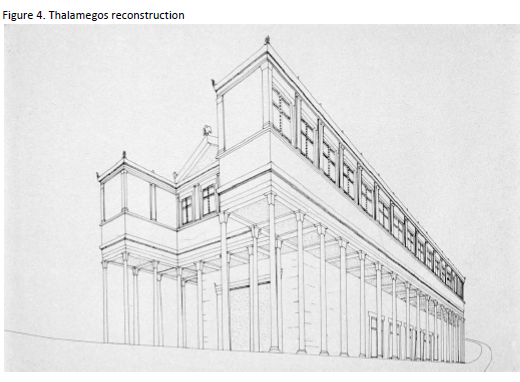
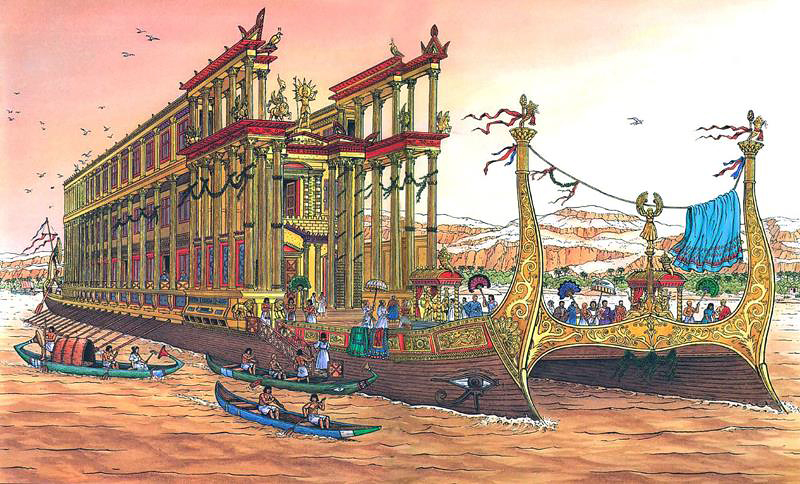
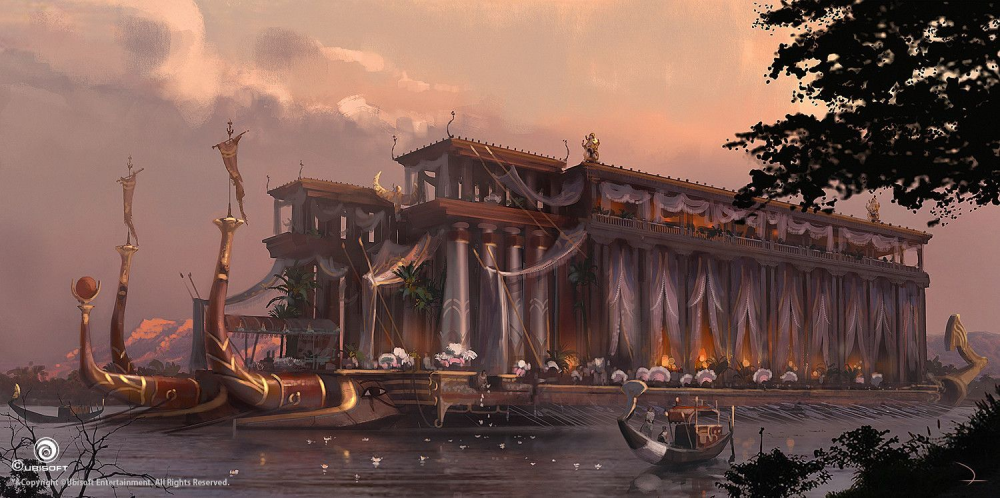
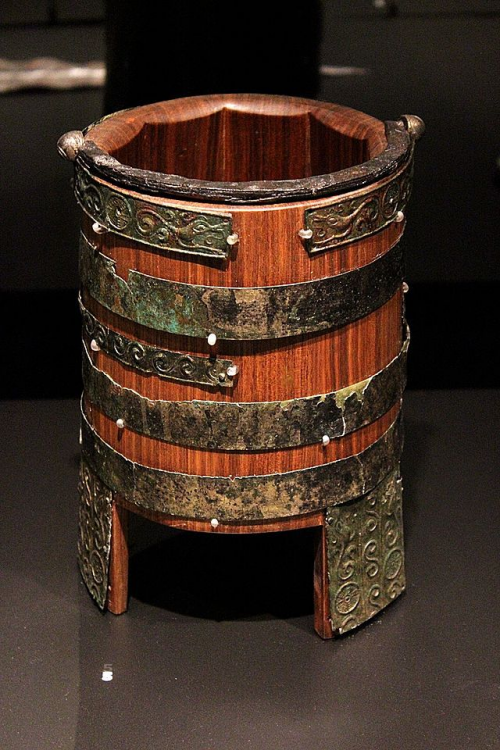
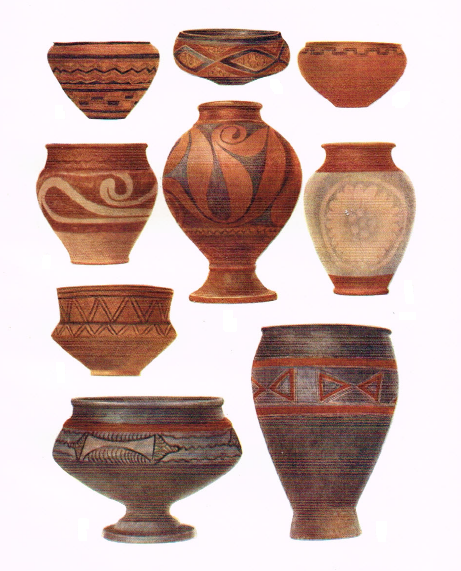
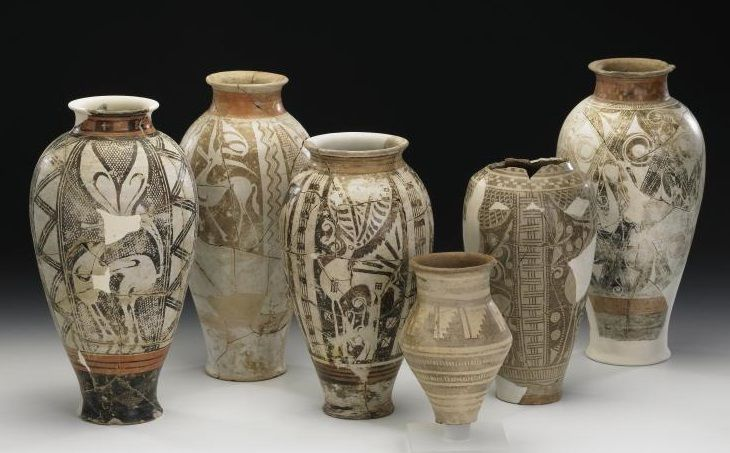
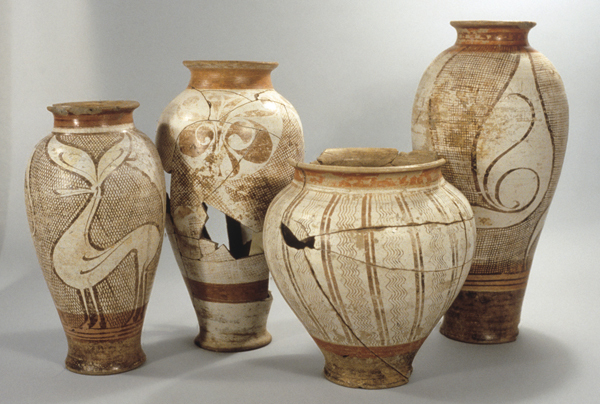
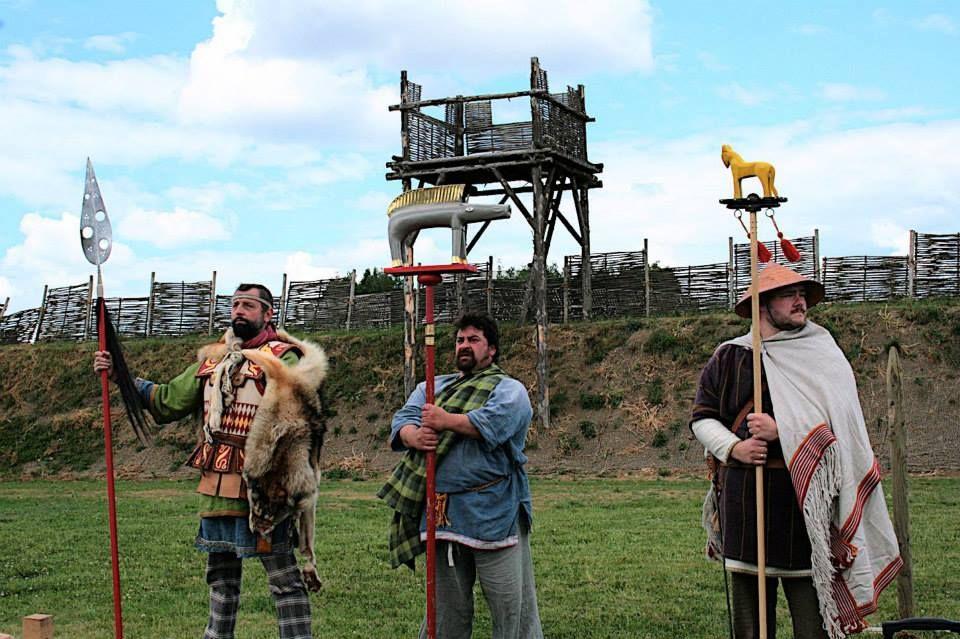
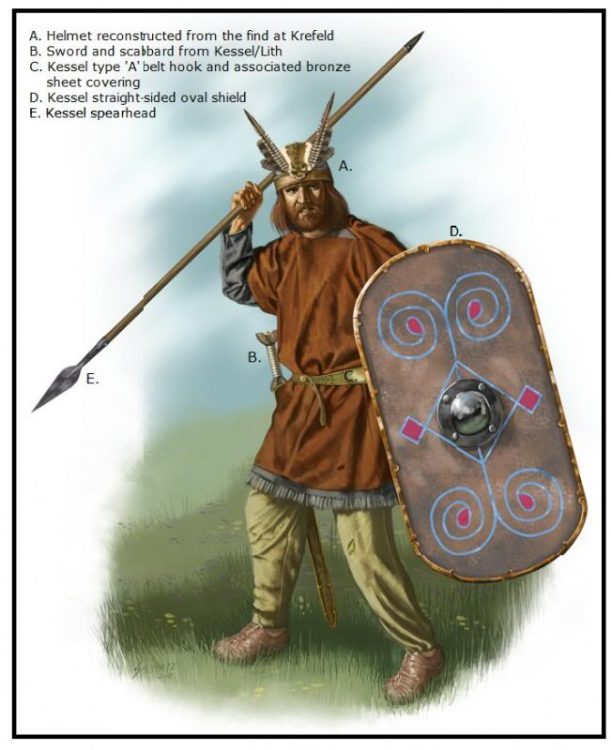
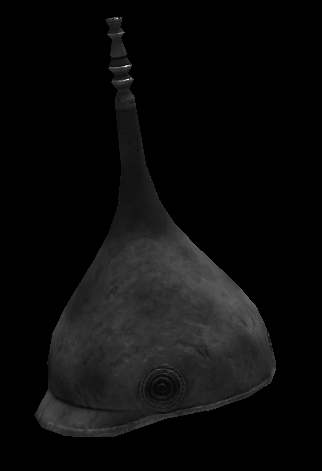
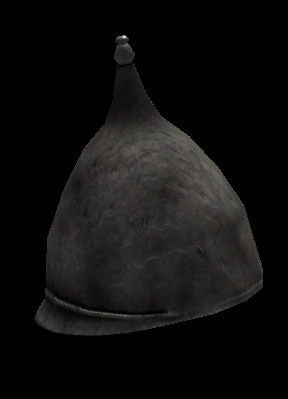
Specific Name Review: Structures
in Game Development & Technical Discussion
Posted
This is a hard one. If I do a backward construction from the Irish "dealbh", it should be something like "deluos".